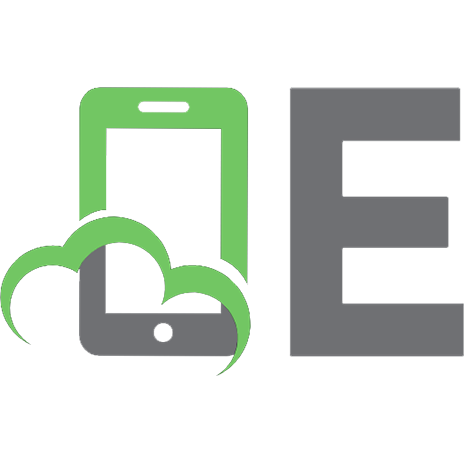The Company Weavers of Bengal: The East India Company and the Organization of Textile Production in Bengal 1750-1813 9848815066, 9789848815069
This study is concerned with the organizational changes that took place in the production of cotton textiles in Bengal i
294 77 29MB
English Pages 230 [241] Year 1988
Recommend Papers

- Author / Uploaded
- Hameeda Hossain
File loading please wait...
Citation preview
UNIVERS-ITYOFMICHIGAN
TIIE COMPANY WEAVERS OF BENGAL
This volume is sponsored by the Inter-Faculty Committee for South Asian Studies University of Oxford
01gitized by
Google
Original frcm
UNIVERSITY OF MICHIGAN
Or19lnal from
UNIVERSITY OF MICHIGAN
Oxford University South Asian Studies series
THE COMPANY WEAVERS OF BENGAL The East India Company and the Organization .. of Textile Production in Bengal 1750-1813
HAMEEDA~SSAIN
DELHI
OXFORD UNIVERSITY PRESS BOMBAY
CALCUTfA
MADRAS
1988
01gitized by
Google
Original frcm
UNIVERSITY OF MICHIGAN
!ID
C/886
":J. 'f3
ff'/,;;i_
Ox/Md U,U,,.nily P,,,,, Wohcn Strttl, Ox/Md OX26D P
/C/8~
Nt>. Y0 1.I: T01onto Dtllii Bombay Ca/cUlta Madtas Karoclu Pttaling Joya Singapo tt Hong Kong Tokyo Noi1obi Da1 ts Salaam Mtl"°"'1 w A i.ckliutd and auocial n in Btirut Bt1/in Ibadan Nicruia
© Oxford Univtnil)' P1tss 1988
SBN 19 562fHJ 7
Typatl by Taj &rvicts, Noida, U. P., lnditl Prinlld by Rtkhll Printen Pvt. Lid., New DtUU 11()()2() Publislitd by S. K. Moo.l:nj u, Ox/01d Uniwnit y l'ra8, YMCA Library Building, Joi Singh Road, New Ddhi Jl(J(J()l
01g1t1,.dby
Google
0119lflal from
UNIVERSITY OF MICHIGAN
...
b. , .:
-CONTENTS
Acknowltdgtmtnts
vii 1x
Abbreviations /nlroduction
XJ
1 2 3 4
The Social and Economic Environment The Weaver at Work Markets, Merchants and Money The Weavers under the Company's Control 5 Production Centres of the Company: The Dhaka Arangs: 1792- 1806 Conclusion
1 20 64 108 140 173
Appnadicu 1PriceofriceinBengal,1750-1800 2 Price of sugar in Bengal, 1750-1800 3PriceofmustardoilinBengal, 1750-1800 4 Price of gur in Bengal, 1750-1800 5PriceofghiinBengal, 1750-1800 6 List of assortments manufactured in Bengal 7 Types of merchant organizations involved in the textile trade
189 195 205
Glossary Bibliography Index
01gitized by
179 180 181 182 183 184 187
Google
Original frcm
UNIVERSITY OF MICHIGAN
MAPS· Map I Areas of cotton cultivation in Bengal and places of import from India Map 2 Some factories and arangs established by the Company which indicate the density of production Map 3 Commercial settlements and weavers' quarters in Dhaka
32
72 142
ILLUSTRATIONS between pages 46- 47 I 2 3 4 5 6 7 8 9 10 11
Woman ginning cotton ' Woman cleaning cotton Dhunera or carder with his bow Woman spinning by hand 'Muhammedan woman spinning' 'Weaver sticking a warp' Weavers straightening the warp threads 'Weaver mussulmaun~ called Julahas' Weaver seated at a pit loom . . Cotton ,muslin. Dhaka. Nineteenth century Embroidered border and ends" in purple '.and · green. " '. .· Dhaka. 1800 '
.
.
Endpapers: ·Processes in the manufacture o{ Dhaka muslin . (J. Forbes Watson, Textile !rfariufuftura f'f India, 1 . 886).
01gitized by
Google
Original frcm
UNIVERSITY OF MICHIGAN
ACKNOWLEDGEMENTS
In my work, I have received ~upport and advice from many persons whom I shall remember even though I cannot acknowledge them individually. My special thanks go to my supervisor, Dr Tapan Raychaudhuri, for his guidance and support; to Professor Abdur Razzaq, National Professor, University of Dhaka, Bangladesh, for his encouragement and for his insights into the eighteenth century; to Dr Barun De, Centre for Studies in Social Sciences, Calcutta; to members of the India Institute at the Bodleian Library; to those at the India Office Library. who provided valuable assistance in my search for sources, particularly to Mr Michael O'Keefe for introducing me to the Bengali Manuscripts, recently discovered in its stacks, and to the Painting and Drawing Section for providing illustrations. plates 1- 9; to the. Trustees of the Victoria and Alben Museum for pennission to reproduce plates 10 and 11; to Dr Anisuzzaman. Professor of Bengali, University of Dhaka, Bangladesh, whose help in deciphering the eighteenth-century Bengali script and language was indispensable for the interpretation of these documents; equally important was his help in analysing the records. This work was submitted for the D.Phil. degree at Oxford University in 1982. I am grateful to St Antony's College and the Beit Fund for making this possible. As one of my examiners, Major J.B. Harrison was particularly helpful in giving very detailed criticism. I hope I have been able to incorporate his suggestions. In preparing the manuscript for publication I have also sought advice from Dr Mafakharul Islam, Professor of History, University of Dhaka. Mrs Humaira Ahmed's assistance with typing has been invaluable. Thanks are due to the Asiatic Society of Bangladesh for permission to use material originally published in an article entitled 'The Company Controls over Textile Production: Implications of its Legal Framework for Weavers 1757 to 180()'. in the Journal ofthe Asiatic Society of Bangladesh , Dhaka, Vol. XXVlll.
01gitized by
Google
Original frcm
UNIVERSITY OF MICHIGAN
Acknowledgements
VIII
No I, June 1983; and to the Indian Economic and Social History Review for data which was published as 'Alienation of Weavers: Impact of the Conflict between the Revenue and Commercial Interests of the East India Company', July-September 1979, Vol. XVI, No 3. A briefer version of the material in chapter V has appeared in the Oxford Universily Papers on India , Volume 1, part 2. Without the moral support given by Kamal, Sara and Dina this work would never have been completed.
01gitized by
Google
Original frcm
UNIVERSITY OF MICHIGAN
ABBREVIATIONS
Records BCSC
Bengal Commercial and Shipping Consultations Bengal Public Council Consultations Bengal Revenue Consultations India Office India Office Library India Office Records
BPC BRC 10 IOL IOR
Journals BPP IESHR IHC /HQ IHRC Progs IJE ISPP JIH JRASB J/TH
Bengal Past and Present Indian Economic and Social History Review Indian History Congress Indian Historical Quarterly Proceedings ofthe Indian Historical Records Commission Indian Journal of Economics Indian Studies Past and Present Journal of Indian History Journal of the Royal Asiatic Society of Bengal Journal of lndia.n Textile History
01gitized by
Google
Original frcm
UNIVERSITY OF MICHIGAN
01glt1Z•d by
G oo gle
Or1g1nal from
UNIVERSITY Of MICHIGAN
INTRODUCTION ..
.
.
This. study is concerned wilh .t he changes which t~k plac,e. in tlie production of cotton textiles in Bengal during the l!ltter half of the eighteenth century. It attempts to relate these to changes .in t.!le .life . . and co11ditions of the artisans who supplied the East India, CQmpany's 1 investment particularly from 1750 to 1813.2 The economy of Bengal, Hke that.of other regi'ons of the subcontinent, was predominantly subsistence-orie.n ted; the bulk of manufactures we,re.nptproduced for the market. They were distribut~d through ·the tradjtional system pf reciP,rocal exchangP. between agricultural and qon-agricultural castes. A very limited exch.ange took place in the periodic rural markets (hats). The majority of products consisted Qf .C!),arse goods produced within family.units of particUlar ~aste groups. Fixed capital requirements were minimal, ~n4. working ,capita1 was derived from the ~eagre ~urplus of sale proceeds. Weaving was often a subsidiary occupation, and. the artisan .could easily move from the plough t.Q the loom during .the fallow season. . . . Besjdes this s.ubsistence-9riented sector qf ploductio.n, .a see









